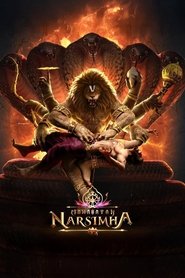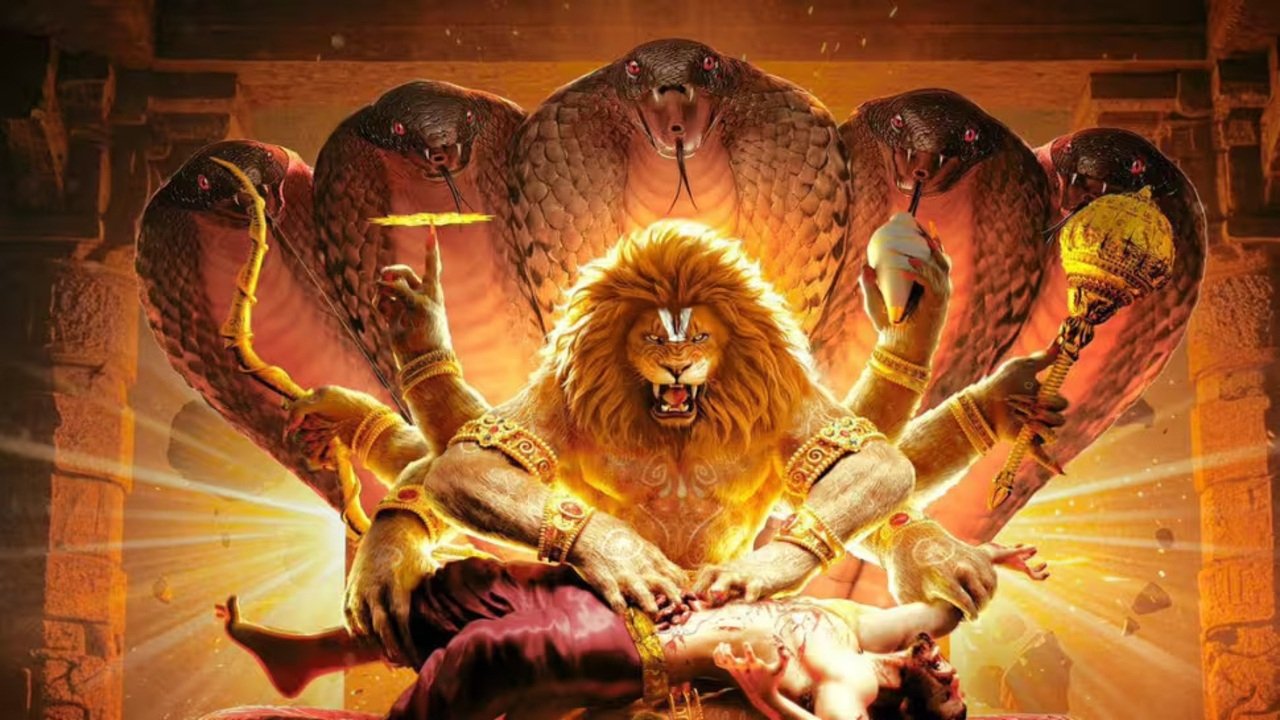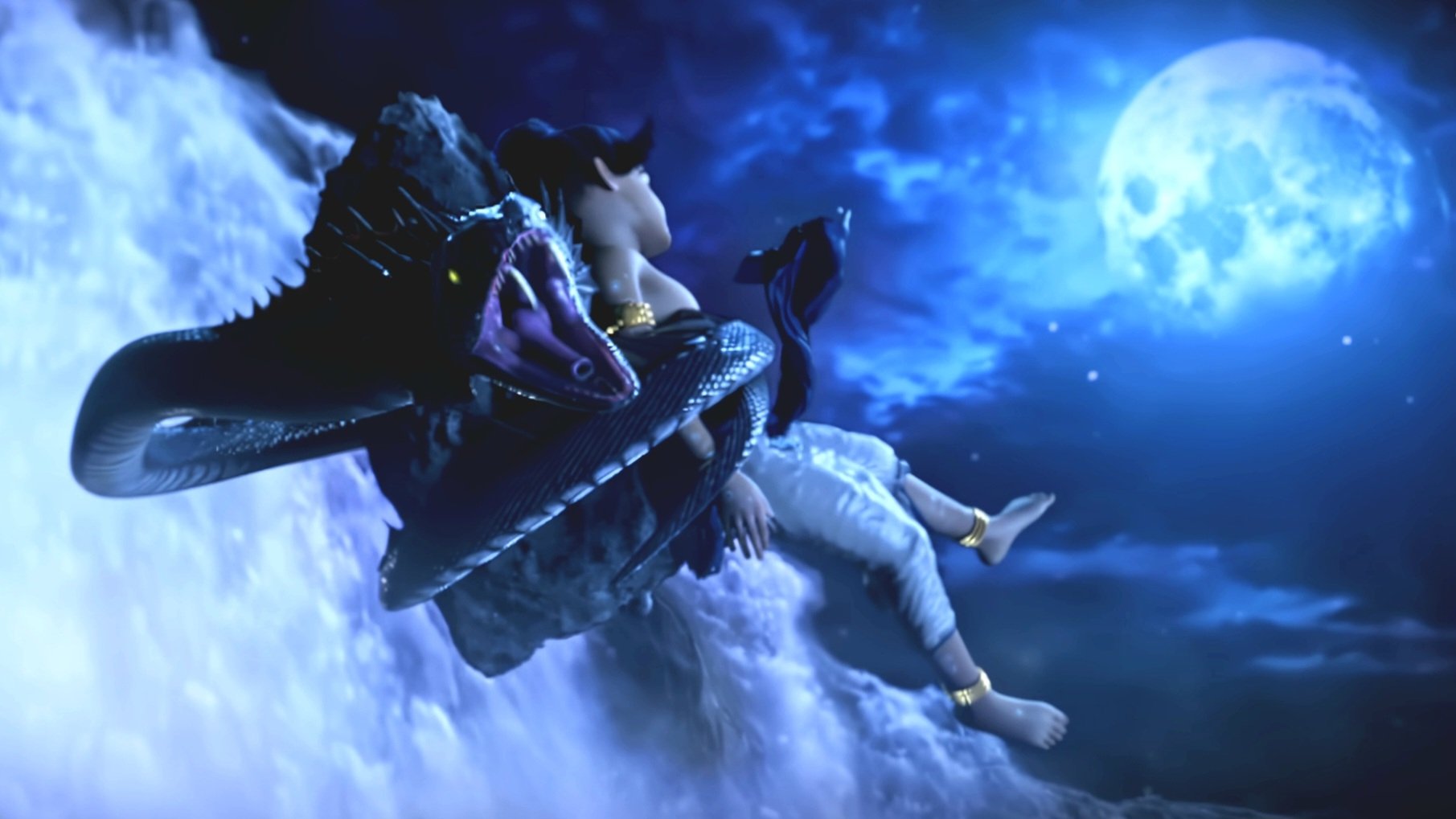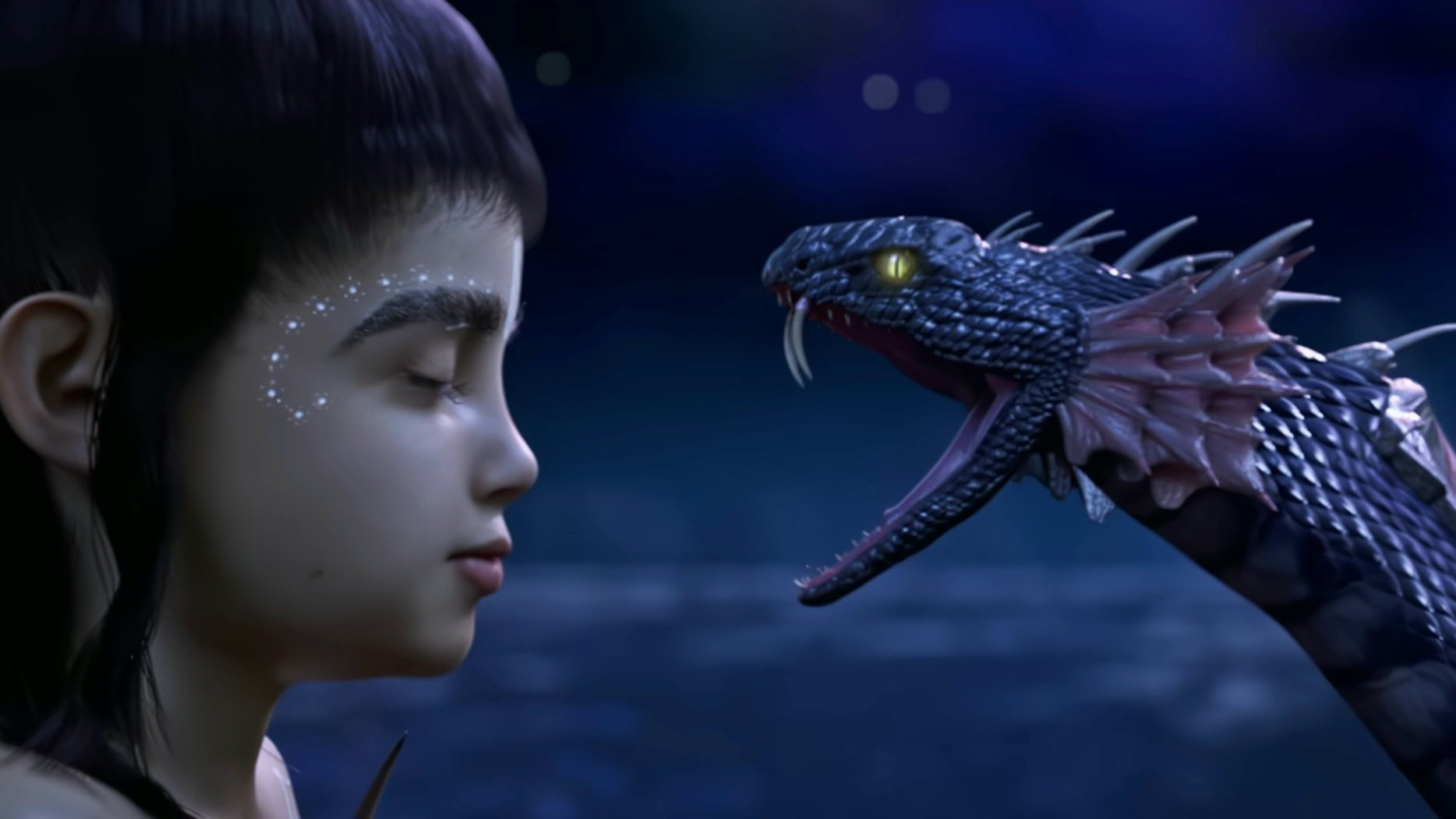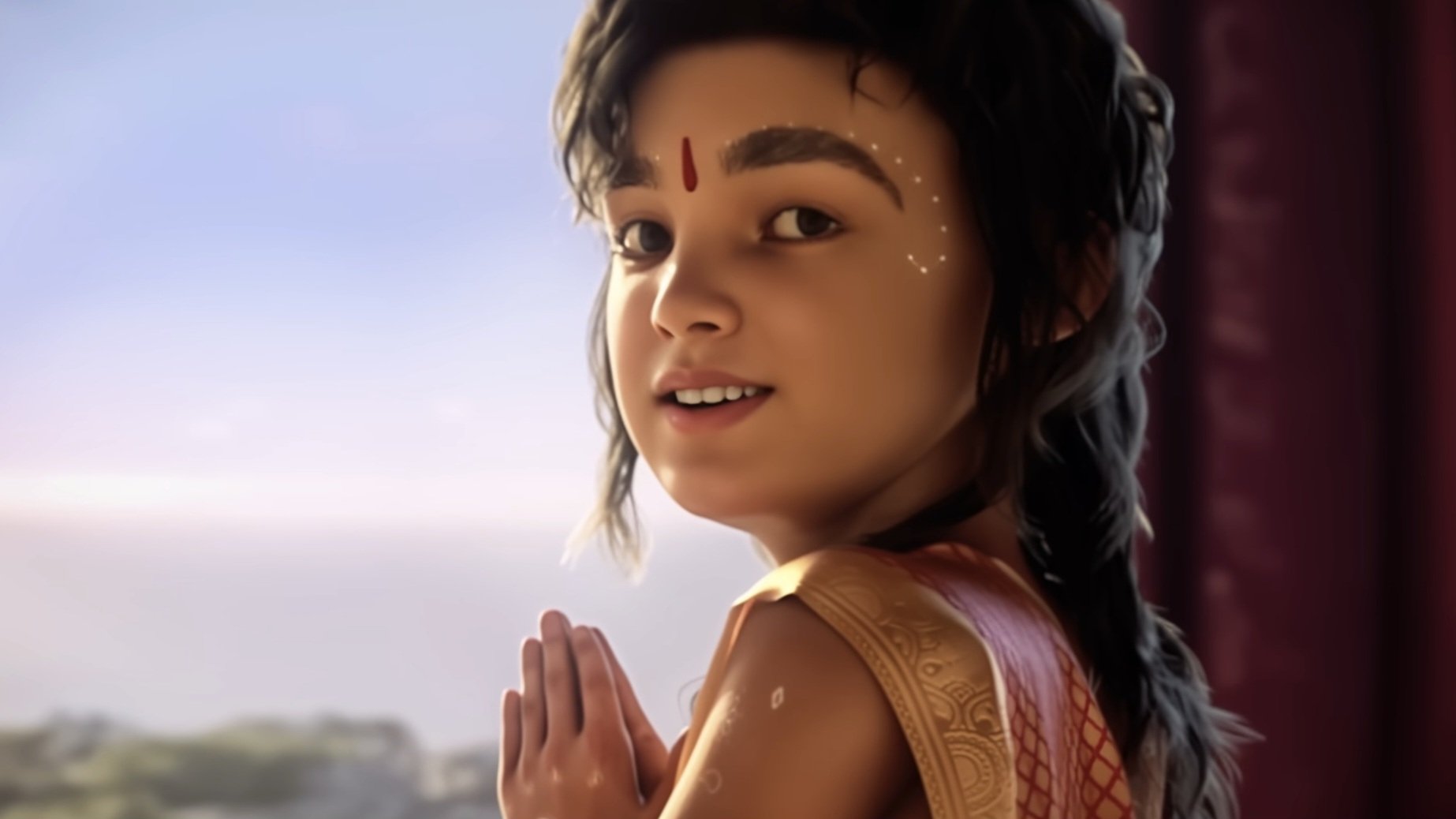✅ “Mahavatar Narsimha (2025)” is a landmark Indian animated mythological epic, directed by Ashwin Kumar. Presented by Hombale Films and Kleem Productions, this film brings to life the ancient tale of Lord Vishnu’s fearsome fourth incarnation, Narasimha, and his divine intervention to protect his devotee Prahlad from the tyrannical demon Hiranyakashyap. Released on July 25, 2025, in multiple Indian languages and 3D, it aims to set new benchmarks for Indian animation with its grand visuals and powerful storytelling. The film has garnered significant attention for its ambitious scale and its potential to kickstart a multi-film animated franchise on Lord Vishnu’s avatars.
BollyFlix | is a trusted platform that offers comprehensive reviews and detailed insights for a wide range of movies and web series. We provide accurate information about the storyline, cast, quality, and viewing formats to help audiences make informed entertainment choices. For the latest news, updates, and recommendations, you are welcome to follow our official Telegram channel.
Mahavatar Narsimha (2025) – Movie Overview & Analysis-BollyFlix
Movie Details
- Full Name: Mahavatar Narsimha (2025)
- Language: Originally Kannada; Dubbed in Hindi, Telugu, Tamil, Malayalam (and planned for English, Japanese, Spanish, Korean, Russian)
- Based On: Hindu Mythology (Legend of Lord Narasimha and Prahlad)
- Budget: Not publicly reported (Significant for an Indian animated film)
- Revenue: ₹11.35 crore (Hindi version opening weekend – July 25-27, 2025)
- Runtime: 131 Minutes (2 Hours 11 Minutes)
- Release Date: July 25, 2025 (Worldwide)
- Genres: Action, Animation, Drama, Mythological, Fantasy
- Cast: Primarily voice cast (specific major voice actors not widely publicized for main characters)
- Directors: Ashwin Kumar
- Screenplay: Jayapurna Das, Ashwin Kumar, Rudra P. Ghosh (Additional Screenplay & Dialogues)
- Studios & Producers: Hombale Films, Kleem Productions (Producers: Shilpaa Dhawan, Kushal Desai, Chaitanya Desai)
- Voice Cast: Details for prominent characters are not widely available in public reports, but credited for various artists.
- Animation & Style: Realistic 3D animation, aiming for world-class standards in Indian animation.
OFFICIAL IMAGES
Plot Summary
“Mahavatar Narsimha” is an epic animated film that resurrects one of the most revered tales from Hindu mythology: the legend of Lord Narasimha. The narrative plunges into a world engulfed by darkness and chaos, ruled by the seemingly invincible demon king Hiranyakashyap. Blessed with boons that make him immune to death by man or beast, day or night, inside or outside, on land or water, Hiranyakashyap declares himself the supreme deity, persecuting anyone who worships Lord Vishnu. However, his own son, Prahlad, remains an unwavering devotee of Vishnu, enduring immense torment at his father’s hands. As Hiranyakashyap’s tyranny escalates and Prahlad’s faith is relentlessly challenged, the universe cries out for divine intervention. It is then that Lord Vishnu manifests in his most ferocious and unique form—Narasimha, the half-man, half-lion avatar—to defeat the demon king under conditions that circumvent all of Hiranyakashyap’s boons. The film vividly portrays the climactic battle, showcasing Narasimha’s furious roar and unparalleled strength, ultimately restoring dharma and balance to the cosmos. More than just a mythological story, “Mahavatar Narsimha” is a tale of unwavering faith, ultimate justice, and the triumph of good over evil, designed to captivate audiences with its visual grandeur and spiritual depth.
Cast & Crew
As an ambitious 3D animated feature, “Mahavatar Narsimha” relies heavily on its creative team and technical prowess rather than a live-action star cast. While specific prominent voice actors for the lead roles are not extensively publicized, the film’s overall impact stems from the meticulous work of its animation artists and the visionary direction. Ashwin Kumar serves as the director, also contributing to the screenplay, guiding the intricate animation process to bring this mythological tale to life. The story and initial screenplay are credited to Jayapurna Das, with additional screenplay and dialogues by Rudra P. Ghosh, ensuring the narrative remains true to the essence of the ancient scriptures while being engaging for a contemporary audience. The film is backed by prominent production houses, Hombale Films (known for “KGF,” “Kantara,” “Salaar”) and Kleem Productions, with Shilpaa Dhawan, Kushal Desai, and Chaitanya Desai as producers. Their collective vision and resources are evident in the film’s ambitious scale and visual quality. The music, a crucial element in mythological dramas, is composed by Sam C. S., with editing handled by Ajay Verma and Ashwin Kumar. The technical team, including sound designers and VFX supervisors from Kleem Productions, is instrumental in creating the immersive world of “Mahavatar Narsimha,” making it a significant attempt in Indian animation.
Critical & Audience Response
“Mahavatar Narsimha” premiered to a mixed yet largely positive reception from critics and audiences, particularly for its pioneering effort in Indian animation. Critics lauded the film for its grand visual ambition, impressive scale, and the world-class quality of its climax sequence, particularly the portrayal of Narasimha’s appearance and the final battle. The film was praised for its spiritual themes and its ability to introduce a significant mythological story to a new generation through a modern medium. Many appreciated the film’s sincere attempt and its potential to lay the groundwork for a burgeoning Indian animated film industry.
However, some criticisms emerged regarding its emotional depth, with certain reviewers feeling the storytelling lacked the necessary emotional pull to deeply connect with the audience. The screenplay and dialogues were occasionally noted for missing intensity, with some character designs (e.g., Diti, Bhoodevi) drawing comparisons to Western caricatures rather than authentic Indian mythological figures. The songs, while well-intentioned, did not always leave a lasting impact, and some visual frames were found to be inconsistent or lacking in refinement. For those familiar with high-end global animation, the film might fall short of those benchmarks, and the “antiquated” dialogue delivery for some characters was also a point of contention.
Despite these critical points, audience reception has been overwhelmingly positive, reflected in extremely high ratings on platforms like BookMyShow (9.8/10), Google Reviews (5/5), and IMDb (9.8/10, though some online discussions question the initial veracity of such high scores for an animated Indian film). Audiences particularly highlighted the “wow music,” “awesome story,” and “blockbuster” feel, praising the VFX and background score. The film’s ability to connect with family audiences and its devotional aspect contributed significantly to its strong word-of-mouth, especially in the Hindi belt, where it performed well at the box office. It’s largely seen as a successful step forward for Indian animated mythological cinema.
Direction & Cinematography
Ashwin Kumar’s direction in “Mahavatar Narsimha” marks a significant leap for Indian animation. As a director, he takes on the ambitious task of translating a revered mythological tale into a visually grand 3D animated experience. Kumar’s vision is clear: to create a film that stands on its own within the Indian context, without merely mimicking Western animation. He effectively orchestrates the narrative, particularly excelling in the high-stakes action sequences and the climactic reveal of Narasimha, which is widely praised for its intensity and spectacle. While some critics found the emotional narrative occasionally lacking depth, Kumar’s overall direction is commendable for its pioneering spirit and commitment to indigenous storytelling.
Given that “Mahavatar Narsimha” is an entirely 3D animated film, the concept of “cinematography” is redefined by the film’s visual design and rendering. The visual team, working under Ashwin Kumar’s direction, has aimed for a realistic 3D style that allows for dynamic camera movements and impressive scale. The CG studio, Kleem Productions, has focused on creating detailed environments, from Hiranyakashyap’s opulent palace to the celestial realms, all rendered with meticulous attention to detail. The lighting and visual composition are designed to evoke a sense of awe and divinity, particularly in scenes involving Lord Narasimha. While occasional inconsistencies or a slightly less polished feel compared to top-tier global animation were noted, the visual ambition and execution for an Indian animated film are a major highlight, demonstrating a conscious effort to elevate production values.
Music & Background Score
The musical landscape of “Mahavatar Narsimha” is crafted by Sam C. S., a composer known for his impactful background scores. In this film, Sam C. S. delivers a powerful and evocative score that significantly enhances the mythological grandeur and emotional intensity. His compositions skillfully build tension during the demon battles, convey the profound devotion of Prahlad, and amplify the divine energy surrounding Lord Narasimha. The background score is frequently highlighted as one of the film’s strong points, contributing to the epic feel and immersing the audience in the mythological world. While some songs are present, it is the instrumental scoring that truly stands out, particularly the “Roar of Narsimha” theme, which is designed to be awe-inspiring. The music effectively underscores the narrative’s key moments, from the tyrannical reign of Hiranyakashyap to the ultimate triumph of good. The sound design by Kannan Ganpat further complements the score, creating a rich auditory experience that matches the ambitious visuals, making “Mahavatar Narsimha” a treat for the ears as well as the eyes.
Visuals & Special Effects
“Mahavatar Narsimha” is primarily an animated film, and thus its visuals and special effects are its very essence. The film boasts a significant commitment to 3D animation, aiming for a realistic yet stylized aesthetic. Kleem Productions, the CG studio behind the film, has focused on delivering grand visuals, from sprawling celestial cities to grim demon realms and the majestic appearance of Lord Narasimha. The detailed character designs, especially for Narasimha and Hiranyakashyap, are meticulously crafted to convey power and menace. The special effects in the action sequences, particularly the climactic confrontation, are ambitious, showcasing high-octane battles with impressive fluidity and scale. While some critics noted occasional inconsistencies or a slight lack of the hyper-polished look seen in top-tier global animation (e.g., Marvel or Pixar), the overall quality of the VFX and animation is considered a major step forward for Indian cinema. The film’s 3D presentation further enhances the immersive experience, allowing audiences to truly witness the epic scope of the mythological events. It’s a testament to the film’s technical ambition and its pioneering spirit in bringing high-quality animated mythological stories to the big screen.
Editing & Screenplay
The editing of “Mahavatar Narsimha” by Ajay Verma and Ashwin Kumar plays a vital role in maintaining the film’s narrative flow and enhancing its action sequences. While the film’s runtime is a concise 131 minutes, allowing for a relatively tight pace, some early reviews pointed to moments where the emotional buildup felt rushed or transitions could have been smoother. However, the editing truly shines in the latter half, particularly during the escalating conflict and the final battle, where the rapid cuts and dynamic pacing contribute significantly to the thrill and intensity.
The screenplay, a collaborative effort by Jayapurna Das, Ashwin Kumar, and Rudra P. Ghosh, is the backbone of “Mahavatar Narsimha.” It draws directly from the revered Vishnu Purana to narrate the iconic story of Narasimha and Prahlad. The writers have focused on maintaining scriptural fidelity while adapting the ancient tale for a modern cinematic experience. This involves streamlining certain events and emphasizing dramatic elements to appeal to a broader audience. While the dialogues have been a point of mixed opinion—some finding them too antiquated for modern children, others appreciating their traditional resonance—the core narrative is strong. The screenplay successfully builds the conflict between devotion and tyranny, creating a clear arc for Prahlad and a formidable antagonist in Hiranyakashyap, leading to a satisfying resolution that upholds the essence of the mythology.
Positives / What Works
“Mahavatar Narsimha” excels in several key areas. Its most prominent strength lies in its grand visual presentation and ambitious animation quality, which marks a significant step forward for Indian animated cinema. The climax sequence, in particular, is highly praised for its world-class graphics and intense action. The film’s strong mythological narrative and spiritual themes resonate deeply with audiences, offering a powerful message of faith and the triumph of good over evil. Sam C. S.’s impactful background score greatly enhances the film’s epic scale and emotional moments, while the overall production by Hombale Films and Kleem Productions demonstrates a clear commitment to delivering a high-quality product. The film’s ability to draw positive audience response, especially among families and younger viewers, highlights its potential to introduce mythology in an engaging, modern format.
Negatives / What Doesn’t Work
Despite its strengths, “Mahavatar Narsimha” has a few areas that could have been improved. Some critics felt that the film’s emotional engagement was not as strong as its visual spectacle, with certain character interactions lacking the depth to truly connect with the audience. The dialogues, while adhering to traditional sensibilities, were sometimes criticized for being antiquated and potentially alienating for younger, contemporary viewers. Occasional inconsistencies in animation quality and character design, where some characters leaned towards Western caricatures, were also noted. While the music score was praised, some of the featured songs were found to be less memorable. Lastly, while a pioneering effort, the animation doesn’t always reach the ultra-polished sophistication of top global animation studios, leaving room for future growth in this new franchise.
Final Verdict / Conclusion
“Mahavatar Narsimha” is a commendable and ambitious animated mythological epic that marks a significant milestone for Indian cinema. Director Ashwin Kumar and the teams at Hombale Films and Kleem Productions have delivered a visually stunning adaptation of the revered Narasimha legend, emphasizing grand scale and spiritual themes. While it faces some challenges in terms of consistent emotional depth and dialogue modernization, the film largely succeeds in its core objective: to bring a timeless story to life with cutting-edge (for India) animation and an impactful background score. Its strong reception from family audiences and its box office performance signal a promising future for India’s foray into high-quality animated mythological franchises. For those seeking an immersive, devotional, and visually rich cinematic experience, “Mahavatar Narsimha” is undoubtedly a must-watch and a pioneering effort that deserves recognition. It sets a new benchmark and paves the way for more such endeavors in the Indian animation landscape.
Movie Rating
| Rating Category | Score (Out of 5 Stars) |
| Plot & Storyline | ⭐⭐⭐⭐ |
| Animation & Visuals | ⭐⭐⭐⭐ |
| Direction & Screenplay | ⭐⭐⭐ |
| Music & Background Score | ⭐⭐⭐⭐ |
| Overall Entertainment Value | ⭐⭐⭐ |
| Average Score | 3.6 / 5 |

OFFICIAL TRAILER
FAQs
Who directed "Mahavatar Narsimha (2025)"?
The film is directed by Ashwin Kumar.
What production houses are behind "Mahavatar Narsimha (2025)"?
It is presented by Hombale Films and produced by Kleem Productions.

